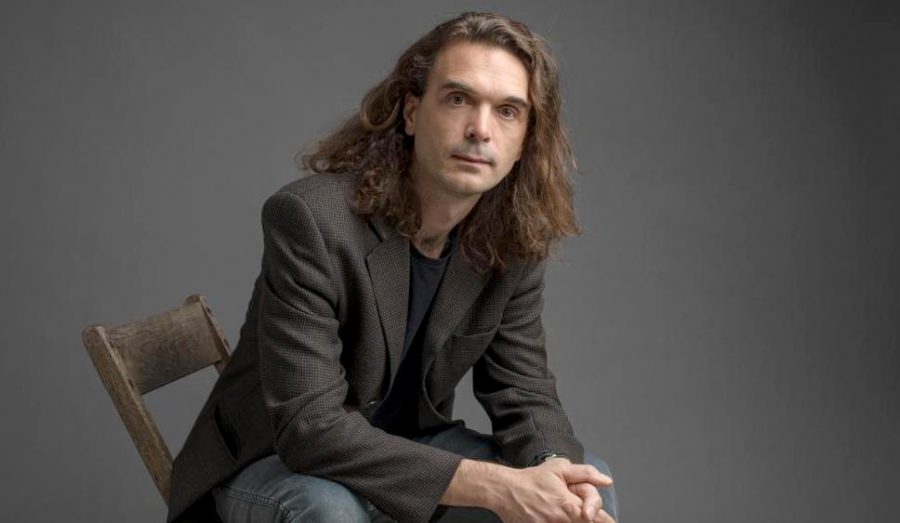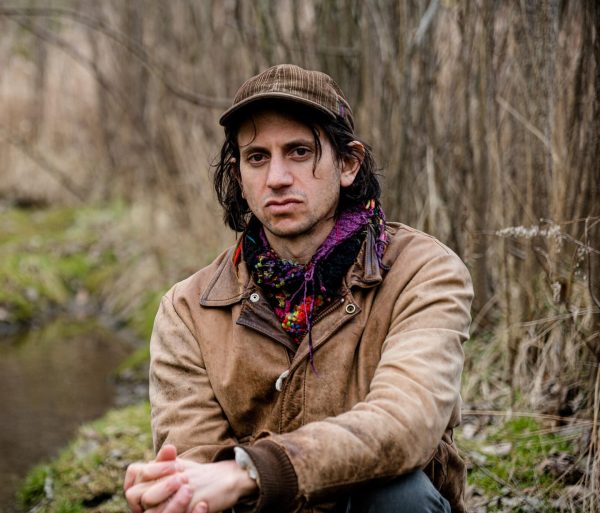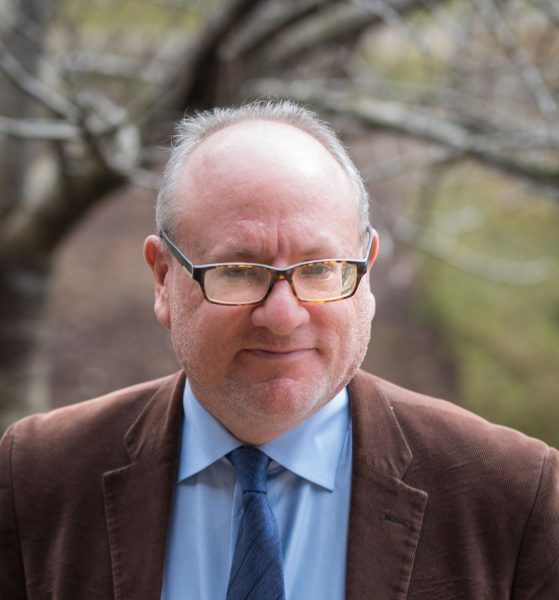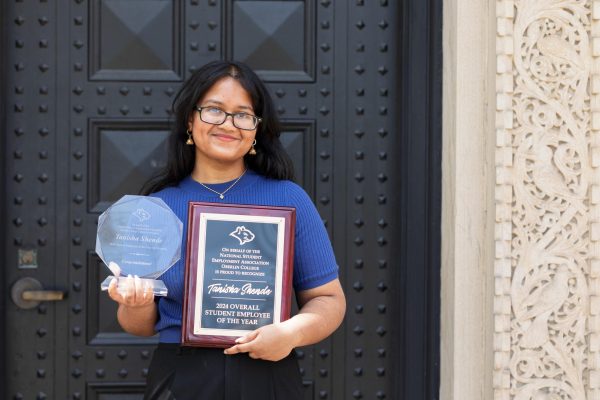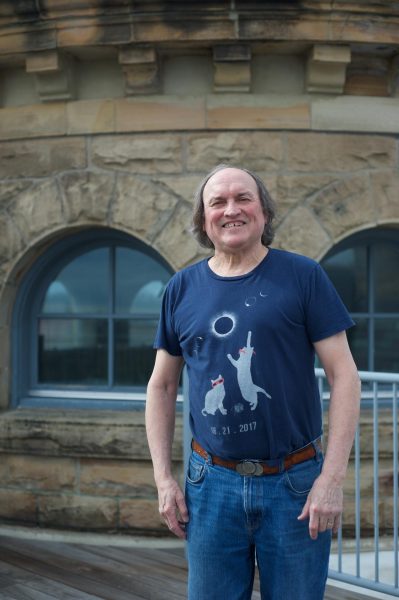OTC: Sebastiaan Faber, Professor and Chair of Hispanic Studies
Photo courtesy of Sebastiaan Faber
Sebastiaan Faber
Professor and Chair of Hispanic Studies Sebastiaan Faber has taught at Oberlin since 1999 and is fluent in English, Spanish, and Dutch. Recently, he coordinated with other faculty members to propose an integrative journalism concentration, which the College Faculty Committee passed with 49 out of 51 members’ approval on Nov. 6, 2019. In addition to writing for a variety of English and Spanish publications, Faber regularly contributes articles to The Nation, covering topics such as Catalan independence and right-wing influence in Dutch politics.
This interview has been edited for length and clarity.
What did the process of putting together the journalism concentration look like?
It was great. It was good to work with [John C. Reid Associate Professor of Rhetoric and Composition and English] Jan Cooper, [Professor of Rhetoric and Composition] Laurie McMillin, and [President’s Chief of Staff] Ferd Protzman and your people, like [one of The Oberlin Review’s Editors-in-Chief] Nathan [Carpenter] and last year, [former Editor-in-Chief] Sydney Allen. We’ve been kicking around the idea for a while, but the sort of new impulse given to the idea of greater concentrations through the Academic and Administrative Program Review process last year was a great opportunity for us to finally get together and hammer this out and push it through the system to get it approved.
The idea has been around for a long time to do something with journalism. I’ve been talking with Ferd for years already, and with Laurie and Jan, too. Already in the last couple of years, we’ve had opportunities to have working journalists on campus to talk with students. I invited Dan Kaufman, who writes for the Times and The New Yorker. For the StudiOC cluster that I taught with [Professor of History, Comparative American Studies, and Africana Studies] Renee Romano and [Associate Professor of Politics] Kristina Mani, we had a veteran journalist who works with journalism students in Atlanta, Georgia to dig up stories about racial oppression in the South. We’ve known of each other for a long time and this was just the right moment to finally get this done.
Were there any roadblocks to getting the concentration approved in the midst of a very tumultuous time on campus?
No, not at all, as far as I know. We had the support from the administration. [Associate Dean of the College of Arts and Sciences] Laura Baudot was enthusiastic about it and helped encourage us to submit it. And from our colleagues, from the faculty, it seems there was no qualms really that we could notice. The vote issued, as you know, even though the attendance to that particular meeting was not super big because it’s a very busy time of the semester. But I think that most faculty see this as a no brainer. We see it in the sense that — although Oberlin produces great journalists, as Jan Cooper said in the meeting — this is a time in history when good journalism is more necessary than ever in whatever medium it comes these days.
A rigorous, broad liberal arts education is a great way to train journalists, right? The skills that journalists need — critical thinking, good communication, getting quickly up to speed about any topic, asking probing questions — and then Oberlin’s own ethos of changing the world and questioning authority, and holding the powers that be accountable. So all that stuff comes together nicely, which is why we have such a good track record of producing journalists.
The big question that has always been around is: Does it make sense to formalize this in a path? All the grads who are journalists and have often been skeptical about that whole idea said, “No, no, no, the idea is exactly that you study whatever it is — English, or Politics, or something — you come to be knowledgeable about a field, and then you end up in journalism. And those journalistic skills you gain organically on the way.” And we agree with that, but that’s also why the whole idea of the concentration is that it doesn’t replace a major. It’s an add-on to a major and it just gives a tiny little extra push or just a couple of signposts for students who are interested and don’t quite know where to start, or need help figuring out when they can do their internship, or what courses are on the catalog that will help them develop these skills and to sort of make it a tiny bit easier for students who are interested to find that pathway that many students have found on their own over the years.
As I’m sure you’re very well aware, being in the field, there’s pressure on traditional journalism right now. What are you most concerned about? What trends do you see?
I completely agree with you. The field is threatened from a number of directions. Economically, of course, it’s still recovering from the big shift in the flow of advertising happening. So the disappearance of print ads — from wanted ads all the way to big corporate ads — newspapers are still struggling to find a replacement income for that stream. Even a paper like the Times struggles with that, let alone local papers. So, economically, finding just the right model to finance properly compensated journalism or media that can afford to fund long-term investigative reporting, that’s a real challenge that the industry hasn’t quite solved yet.
On the other hand, the clear threat that I see is from state structures, from governments. So, whether it’s the Trump administration or the Bolsonaro administration in Brazil or what’s going on in Hungary or in Poland or in Italy, the combined pressure of governments and administrations who refuse to understand what journalistic freedom and the freedom of press is about and then apply pressure through restrictive government policy, intimidation of journalists, and corporate pressure. If you look at Italy, it’s the combination of the state restricting journalistic freedom and the state having control over corporate structures or media conglomerates that through their internal policies can restrict journalistic freedom. The same is true in Spain. So those threats combined with that economic challenge I mentioned earlier make it really tough for journalism to thrive.
At the same time, you see all kinds of new approaches to journalism appear all over the world. And in that sense the advent of the internet and the drop in cost of media production — whether it’s layout, using images, or video — has made it possible for citizen journalism, or what some call committed journalism or civic journalism, to rise up. So I think the most interesting media that we see are exploring new funds and revenue. For example, the whole idea of the newspaper or the magazine as a nonprofit, combined with these new types of citizen journalism, I think are producing great news. It’s not properly compensated news, so it’s hard to make a living out of it, but just for the future of journalism, I think this is really interesting and important.
I’m curious whether the concentration is malleable enough that students who want to explore these different forms of journalism — online or visual or auditory mediums — is there space for the journalism concentration to be as adaptable as the journalism landscape?
Completely. I mean already in the proposal we defined journalism super broadly as any kind of nonfiction. It was really, really broad. We absolutely think of journalism in really broad terms, which is why, if you look at the list of courses from faculty we are in the process of settling, some of which ended up in that proposal, it includes cinema studies, creative writing, several of us in the languages, science journalism. So I think absolutely, especially because it’s a concentration. It’s been really, really open and I’m sure that the faculty that’ll end up making decisions over what counts and what doesn’t count will be very amenable and very open to students’ arguments and why particular things should count. So it’s going to be the opposite of restrictive in that way.
I’d like to talk about what you do besides being a professor on Oberlin’s campus. I know that you write for The Nation — what does that look like?
I write with a friend of mine. I’ve written a couple of solo pieces about the Netherlands and do an interview here and there, but the coverage we do about Spanish current events I write with my friend Bécquer Seguín, who was a professor at [Johns] Hopkins [University]. We’re supposed to file something this weekend, so in a day or two, because the elections happened on Sunday. We had a piece in October, we did a piece in July, April, I had another two pieces in April, and an interview. So about every other month we write. And then the pieces on Holland just happened to be because there were elections and political things going on there. So I started writing regularly for The Nation in 2014. Since then I’ve written I think 30 or so pieces for The Nation, once every couple months.
What’s it like writing for The Nation? And what’s a key to succeeding in journalism that you can give to students?
Well, The Nation is a really great magazine for people like me to write in because even though it pays very badly — because The Nation never has had much money, it’s always operated on a shoestring budget — it allows a fair amount of freedom to its writers, especially since it’s really transitioned to an online format. They come out in print, obviously, and the print edition is great, but I think they publish four times as much online as appears in print every week. So that means that space is not a huge concern. So they’re fairly flexible when it comes to the length, which is great. And on the other hand, they embody the best of American journalistic traditions, so they are really sharp. They have great authors and excellent fact-checking. They have a great editorial staff. They have great designers. So in that sense, it’s great to work with a long-standing magazine with such a strong tradition like The Nation. I have to say that as an academic, it’s extremely rewarding to try to write for a broader audience. I’ve long felt that one of the drawbacks of academic writing is that you end up often writing for very small groups of people in formats and languages that are not really understandable or interesting or attractive to anyone beyond that small circle. So the challenge for an academic to switch gears and to write for a broader audience is really terrific.
In addition to The Nation, I write a fair amount for the Spanish media in Spanish. I write for a Spanish weekly magazine that comes out online. And for them, I write one or two pieces a month. Then I have another couple of Spanish papers I write for. And then I write for the Dutch media once in a while too, in Dutch. I just last week published a long piece, like 3000 words, on Spain for a Dutch weekly magazine. So for me, journalism has been a great way for me to find new challenges in a fairly advanced stage of my academic career.
I’ve been at Oberlin for 20 years. I’ve got tenure, I’m a full professor, and all that, so becoming a journalist — or playing a journalist, in a way, because I’m not really a journalist — has been a great way to connect with new audiences and to challenge myself, to find new formats to work in and new timelines, too. In academia, you write something and it can be one or two years before it finally comes out, whereas if you write in journalism, it’s a matter of days or sometimes hours before between filing and appearing.
I just have one more question for you. I know that you have a son who goes to Oberlin and I know that your wife is a Spanish professor here. So what’s it like having your whole family on campus?
That’s a funny question. What’s it like? Well, I mean, in a way I’ve always had my whole family on campus. As somebody who teaches at Oberlin, who lives in Oberlin, there’s very little separation between your home life and your campus life and your town life. Everything sort of flows into each other. To have Jakob — Jakob is a third-year, he’s a Physics and Philosophy major — and it’s been great. It’s been really nice to see as a parent of an Oberlin student that most of the things that we tell ourselves about Oberlin, that we tell prospective parents about Oberlin, are actually true: That we do have incredible opportunities for driven students to an excellent education, to do great research. In that sense, it’s been really rewarding to have my own child have that experience that we provide, that I’ve been helping provide, for students for so long. And to have [Instructor of Spanish & Language Teacher Training] Kim [Faber] on campus has been great too. Kim has done amazing work in our department and beyond — the SITES Program, and training students to be teachers, that’s pretty great.


